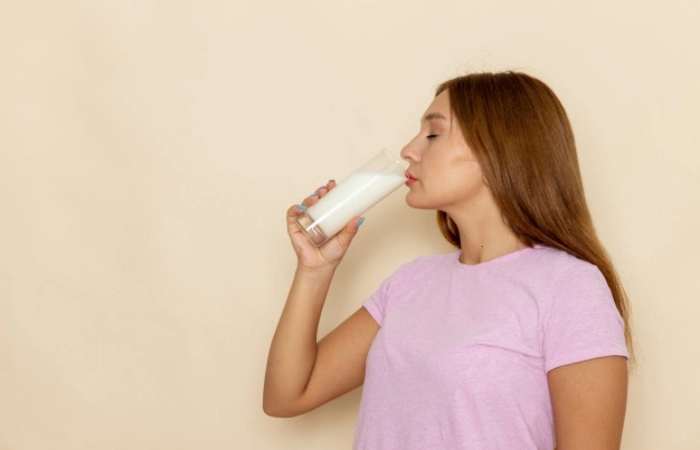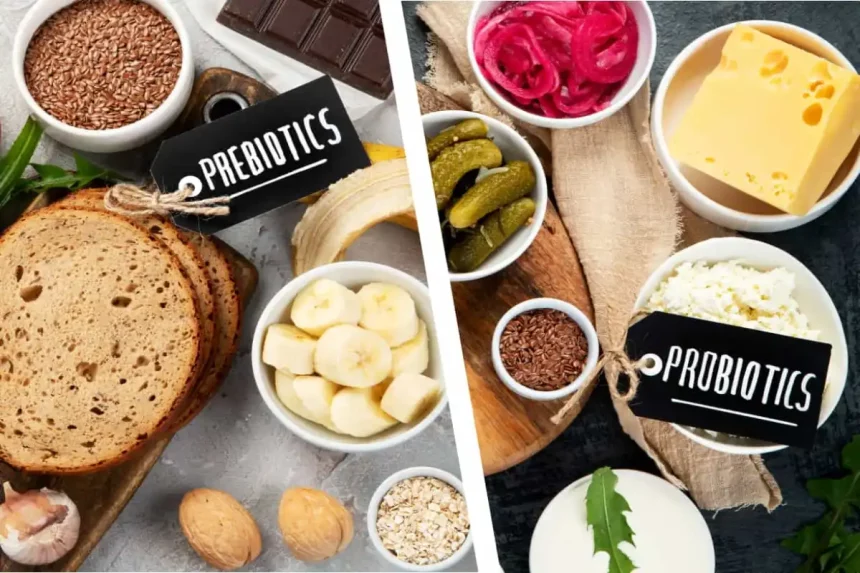Functional foods are naturally occurring or developed that provide a benefit beyond their nutritional value. As the name suggests, functional foods affect physiological functions measurably in disease prevention and health promotion. Prebiotics and probiotics fall into this category.
Prebiotics are indigestible foods that provide healthy effects by selectively stimulating the growth or activity of a bacteria or a limited number of them in the colon, improving digestion and constipation. On the other hand, probiotics are functional foods containing defined and viable microorganisms, in sufficient numbers to alter the microflora with benefits for the organism’s general state. In short, they are nothing more than live microorganisms that help improve health, specifically bacteria or yeasts that normally found in the body.
Their function is to maintain the balance of the normal bacterial flora in the colon in both cases. In addition, the possible preventive effects of the use of probiotics in gastrointestinal pathologies are currently being investigated, among which the following can highlight: lactose intolerance, traveller’s diarrhoea, and that associates with the use of antibiotics, gastroenteritis, intestinal infections due to colonization by pathogenic bacteria, irritable bowel syndrome, inflammatory bowel disease, and colon cancer.
Table of Contents
Functional Foods: Where They Come From

The most widely used probiotics are bifidobacteria, lactobacilli, and saccharomyces, found in yogurt, kefir, dark chocolate, or tiger nut. Although it is still under study, its use recommends in treating gastroenteritis, irritable bowel. Vaginal infections or cystitis, and mastitis during lactation.
In any case, a doctor should consult to assess in which cases they can be taken, their dose, and for how long. Likewise, it should bear in mind that the cold chain should not break during handling, and its consumption should do separately from hot drinks and antibiotics. It is important to note that some probiotics may have possible contraindications during pregnancy and lactation when there is a weakened immune system or if you have short bowel syndrome.
By way of conclusion, it clear that the evidence on the preventive role of probiotics and prebiotics is very limited. In most cases, it does not exist or is preliminary. The only areas where they have shown some efficacy are diarrhoea for probiotics and constipation for prebiotics.
Are Plant-Based Drinks Healthier Than Milk?

The drinks plant (made from soy, rice, almond) cease long ago to be a rarity on supermarkets’ shelves. More people incorporate them into your daily diet, substituting milk consumption in the belief that they are healthier. But, is the consumption of soy, almond, or rice milk healthier than that of cow’s milk of a lifetime?
In the first place, it is necessary to clarify that this type of vegetable drink has nothing to do with dairy composition. So they are not milk despite the custom of calling them that.
Second, it is important to make it clear that vegetable drink consumption is not healthier than that of milk. Depending on the type consumed. It should be borne in mind that it can provide more calories than dairy because it has higher sugar content.
Benefits Of Consuming Dairy
The consumption of dairy products (milk, yogurts, cheeses) gives us proteins of high biological value. Proteins that our body can use to regenerate, repair, and form tissues. In the case of vegetable proteins, their biological value is lower.
Likewise, 98% of what we eat is dairy products, while vegetable proteins have a lower bioavailability, around 65%.
Another benefit of milk and its derivatives is that they provide a large number of micronutrients, that is, minerals (calcium, phosphorus) and vitamins (of group B, A, D). Finally, dairy products favour a good distribution of the intestinal microbiota (the bacteria that we have naturally in the intestine and that are beneficial for our body’s functioning).
How Many Dairy Products Should You Consume?
Once we are clear about the advantages that dairy consumption brings us, it is important to do it correctly. In this sense, the intake of between 2 and 4 daily servings recommended.
To calculate, we have to consider that a serving is equivalent to a glass of 200 millilitres of milk. Two yogurts, or 40-50 grams of cheese.
Can I Have Milk If I Am Lactose Intolerant?
In specific lactose intolerance cases, it is better to consume lactose-free milk than to substitute vegetable drinks. Besides, if the intolerance is not severe, the consumption of yogurts and cheese should be maintained. Since their lactose content is lower and they usually well-tolerated.
In the specific case of yogurts, we find bacteria that contain lactase (the enzyme that digests lactose). So they usually well-tolerated. Keep in mind that maintaining the consumption of these is beneficial to avoid aggravating lactose intolerance. Intolerance worsens if we do not expose our body to any product with lactose. Since as our body does not need lactase enzyme, it stops production.






